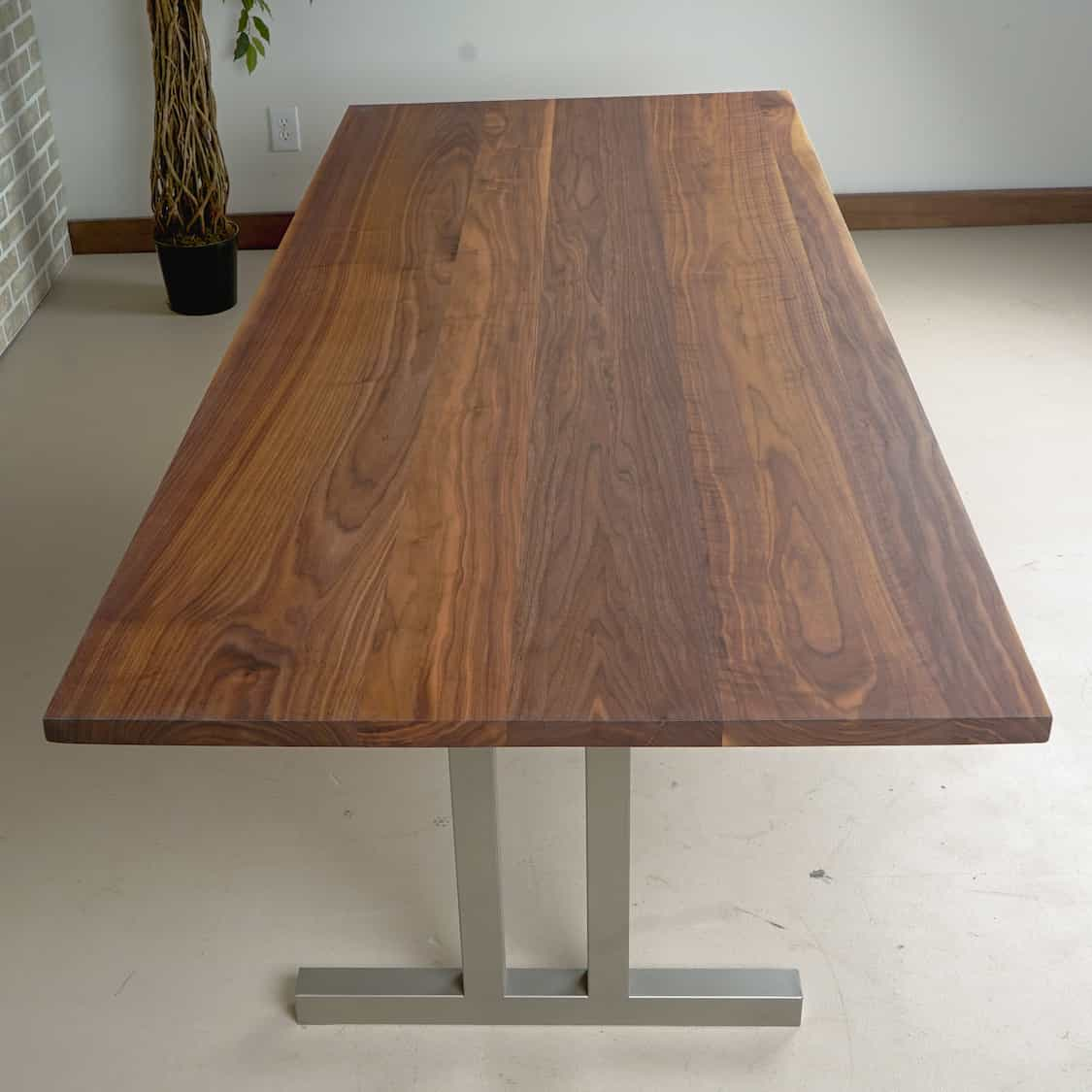Checking Out the Various Sorts Of Dining Table Legs Timber for Your Eating Space
The choice of eating table legs wood can exceptionally impact both the useful and visual high qualities of your dining space. Solid wood choices, such as oak and walnut, supply a traditional look with unmatched sturdiness, while engineered wood alternatives supply cutting-edge layouts that simulate the splendor of natural grains.
Strong Wood Options

Furthermore, strong timber is renowned for its strength and long life. Unlike engineered materials, solid wood is much less vulnerable to warping and damage with time when correctly kept. This makes it an excellent selection for families or those that regularly organize gatherings. Each piece of strong timber is distinct, showcasing specific qualities that contribute to the beauty and personality of the table.
Additionally, solid timber can be finished in numerous means, ranging from natural oils to stained coatings, allowing house owners to individualize their furniture to match their decoration. In recap, picking strong wood for eating table legs not just ensures structural stability however likewise enhances the aesthetic allure of the dining area, making it a beneficial financial investment for any home.
Engineered Wood Alternatives

Plywood, constructed from numerous layers of timber veneer, is secure and particularly strong, making it an excellent choice for eating table legs. Its split make-up permits it to stand up to changes in humidity and temperature level much better than conventional strong wood. MDF, on the various other hand, provides a smooth surface for painting or veneering, enabling designers to accomplish a sleek look while keeping structural honesty.
When choosing crafted timber choices, it is vital to think about the designated usage and wanted visual. These materials not just improve the functionality of dining areas but also permit for better layout flexibility, making sure that traditional and contemporary designs can exist together sympathetically.
Reclaimed Timber Includes
Redeemed timber uses a special blend of sustainability and personality, making it an increasingly prominent option for eating table legs. Sourced from old barns, factories, and various other structures, recovered timber personifies a background that new products just can not replicate. Each piece brings its very own tale, noted by unique blemishes, knots, and differing grain patterns, which contribute to a table's distinct aesthetic allure.
Along with its visual appeal, reclaimed wood is an eco friendly choice. look at this website By repurposing previously utilized materials, it reduces the demand for brand-new lumber, therefore aiding to lessen and his explanation preserve forests waste. This aligns with an expanding consumer preference for lasting practices in furnishings.
Moreover, redeemed timber is often more resilient than freshly collected wood because of its age. The natural drying out process that reclaimed timber goes through cause a denser and more powerful material, making it less vulnerable to warping and splitting. This improves the durability of dining tables, allowing them to withstand the rigors of daily usage.
Softwood vs. Wood
When picking eating table legs, comprehending the distinctions in between softwood and wood is crucial for achieving both visual and useful goals. They usually display a more rustic look, making them appropriate for informal or country-style eating areas.
On the various other hand, hardwoods, sourced from deciduous trees like cherry, maple, and oak, are renowned for their thickness, stamina, and resilience. The detailed grain patterns and abundant colors of hardwoods supply a innovative and ageless charm, making them optimal for formal eating settings. While hardwoods have a tendency to be extra costly and heavier, their resilience against wear and tear usually validates the investment.
Ultimately, the option in between softwood and wood for eating table legs must line up with your design vision, use requirements, and budget plan, making certain that your eating room reflects your individual design while continuing to be functional gradually.

Treatments and finishes
The aesthetic allure and longevity of eating table legs can be dramatically improved through numerous coatings and therapies. These procedures not just protect the timber from damage yet also boost its appearance, allowing it to match varied indoor styles.
One usual treatment is staining, which passes through the wood and enhances its all-natural grain while including color. Discolorations offer a rich, stylish appearance, allowing home owners to match their furniture with existing style. Conversely, clear surfaces such as polyurethane or varnish produce a safety layer without altering the timber's initial shade, ensuring longevity against damage.
Furthermore, natural oils, like tung or linseed oil, nourish the timber and offer a refined shine, all while being eco-friendly. These oils enable the surface to breathe, preventing dampness buildup and possible warping.
For those seeking a rustic beauty, distressed or weather-beaten finishes can be applied to produce an aged appearance, including character to the item. Ultimately, the choice of surfaces and treatments depends upon individual preference, desired appearances, and the details wood kind, making it vital to think about these elements when selecting dining table legs for your area.
Verdict
Solid woods, crafted alternatives, and recovered alternatives each deal distinctive benefits, catering to numerous preferences and needs. Ultimately, the selection of wood kind ought to line up with wanted design, resilience, and ecological factors to consider, improving the overall eating experience.
The selection of eating table legs like it wood can profoundly influence both the aesthetic and useful qualities of your eating room - Dining Table Legs Wood. Strong wood options, such as oak and walnut, provide a classic appearance with unequaled longevity, while crafted timber choices supply innovative styles that simulate the richness of natural grains. Strong timber supplies an ageless top quality that can boost the total layout of a dining area. Each piece of solid wood is unique, showcasing individual qualities that include to the appeal and personality of the dining table
Moreover, reclaimed timber is typically more sturdy than newly harvested timber due to its age.